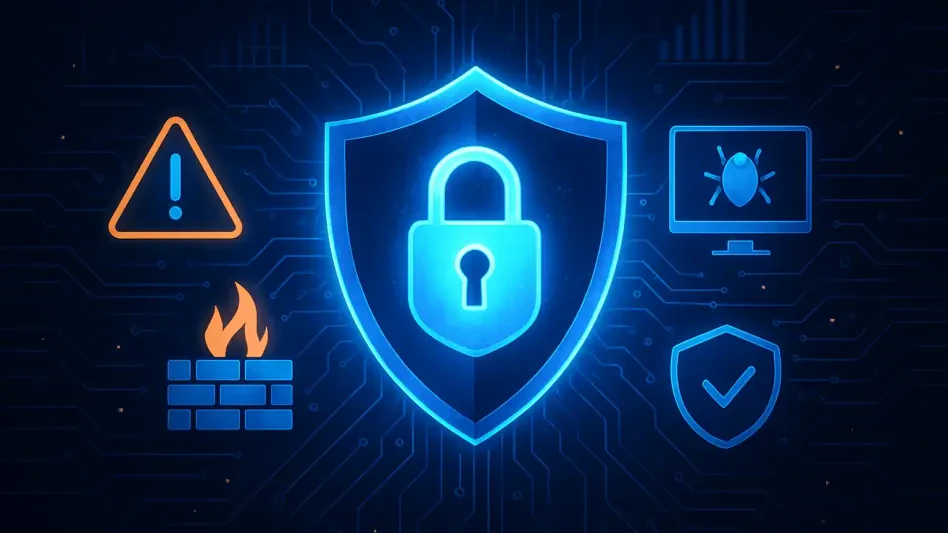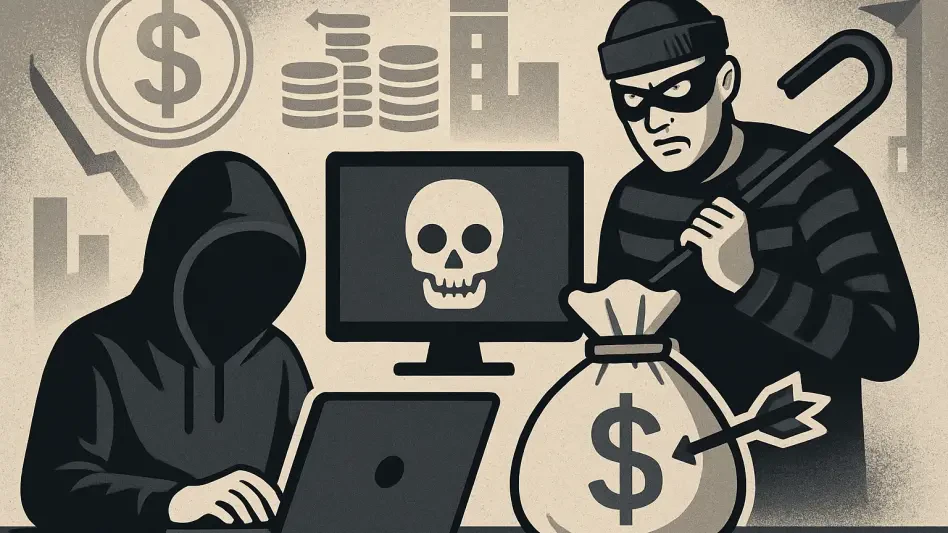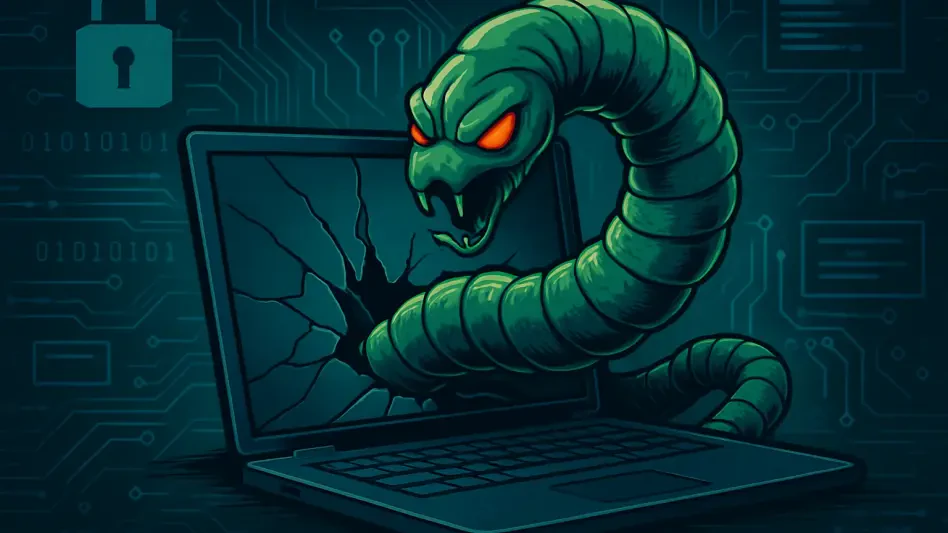In an era where digital transformation shapes every facet of business operations, the escalating sophistication of cyber threats poses a significant challenge to organizations across all sectors. With cybercriminals deploying advanced tactics to exploit vulnerabilities, companies face the risk of substantial financial losses and irreparable damage to their reputation if defenses falter. The urgency to adopt robust cybersecurity measures has never been more critical, as attacks grow in both frequency and complexity. This pressing reality underscores the need for a proactive approach, blending cutting-edge technology with human vigilance to safeguard sensitive data and systems. Businesses must navigate this intricate landscape by implementing multi-layered strategies that address both external threats and internal weaknesses, ensuring resilience in a constantly evolving digital environment.
Building a Resilient Defense Framework
Leveraging Advanced Threat Monitoring
Managed Detection and Response (MDR) services have emerged as a cornerstone for organizations aiming to stay ahead of cyber threats through continuous, expert-led surveillance. By combining human expertise with state-of-the-art tools, MDR offers 24/7 monitoring and swift incident response, significantly reducing the window of opportunity for attackers to inflict damage. This approach is particularly valuable for businesses lacking the resources to maintain an in-house security team, as it outsources complex threat detection to specialists who can identify and neutralize risks in real time. The proactive nature of MDR ensures that potential breaches are addressed before they escalate, providing a critical safety net for companies handling sensitive data across diverse industries.
Beyond immediate threat response, MDR services also contribute to long-term security by analyzing patterns and trends in cyber activity to anticipate future risks. This predictive capability allows businesses to adapt their defenses based on actionable intelligence, fortifying their systems against emerging attack vectors. As cyber threats evolve, the integration of MDR into a broader security strategy helps organizations maintain a dynamic posture, adjusting to new challenges without compromising operational efficiency. Such a system not only mitigates damage but also builds confidence among stakeholders that data protection remains a top priority, fostering trust in an increasingly skeptical digital landscape.
Implementing Strict Access Controls
Zero Trust Architecture represents a paradigm shift in cybersecurity, operating on the principle of “never trust, always verify” to minimize unauthorized access within and outside network boundaries. This model requires continuous validation of users and devices, regardless of their location, ensuring that every access request is thoroughly authenticated and authorized. By segmenting networks and limiting lateral movement, Zero Trust reduces the risk of widespread compromise if a single point of entry is breached, making it an essential strategy for organizations with distributed workforces or cloud-based operations.
In addition to enhancing security, Zero Trust Architecture fosters a culture of accountability by enforcing strict identity verification protocols, such as Multi-Factor Authentication (MFA), which adds layers of protection through multiple forms of validation like passwords and biometric scans. This layered approach ensures that even if one credential is stolen, additional barriers prevent attackers from gaining full access. For businesses, adopting Zero Trust means rethinking traditional perimeter-based defenses and embracing a more granular, user-centric model that aligns with modern work environments, ultimately reducing vulnerabilities in a landscape where remote access is commonplace.
Empowering People and Technology
Securing Devices in a Remote World
Endpoint Detection and Response (EDR) has become indispensable as the proliferation of devices like laptops and smartphones creates countless entry points for cyber threats, especially in remote work settings. EDR solutions focus on monitoring and protecting these endpoints by detecting suspicious activities and enabling rapid responses to potential breaches. This technology is crucial for organizations with employees accessing networks from various locations, as it provides visibility into device health and behavior, ensuring that threats are identified and contained before they spread across the system.
Moreover, EDR enhances overall security by integrating with other tools to provide a comprehensive view of an organization’s threat landscape, allowing for coordinated responses to incidents. By automating routine tasks like threat hunting and log analysis, EDR frees up IT teams to focus on strategic initiatives while maintaining robust protection across all endpoints. This balance of automation and oversight is vital for businesses navigating the challenges of hybrid work models, where securing diverse devices under varying conditions remains a persistent concern. Implementing EDR ensures that endpoint vulnerabilities do not become gateways for larger attacks.
Fostering a Culture of Awareness
Regular security awareness training stands as a critical defense mechanism against human error, often exploited through tactics like phishing and social engineering. Educating employees on recognizing suspicious emails, links, and requests equips them to act as the first line of defense, significantly reducing the likelihood of successful attacks. Training programs tailored to address current scams and evolving tactics ensure that staff remain vigilant, adapting to new threats as they emerge in the digital space, thereby safeguarding organizational assets from preventable breaches.
Beyond initial education, ongoing training reinforces best practices and keeps cybersecurity at the forefront of daily operations, embedding a mindset of caution and responsibility. By simulating real-world attack scenarios, such as phishing exercises, companies can assess employee readiness and address gaps in knowledge without exposing systems to actual risks. This continuous learning approach not only mitigates the impact of human-centric vulnerabilities but also builds a resilient workforce capable of supporting technological defenses. A well-informed team complements advanced systems, creating a balanced security posture that withstands both technical and social engineering challenges.
Reflecting on Strategic Cybersecurity Milestones
Looking back, the journey of integrating advanced cybersecurity strategies revealed a landscape where no single solution could fully shield businesses from digital threats. The adoption of Managed Detection and Response services demonstrated the power of expert vigilance, while Zero Trust Architecture redefined access security with relentless verification. Endpoint Detection and Response fortified remote work environments, and consistent employee training proved essential in combating human error. Moving forward, organizations should prioritize regular assessments of their security frameworks, ensuring adaptability to new risks. Investing in emerging technologies and fostering cross-departmental collaboration will further strengthen defenses, paving the way for sustained resilience against cybercriminals in the years ahead.








